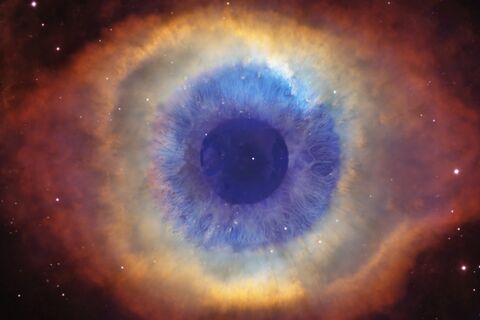OUR GALACTIC NEIGHBOURHOOD!

From Earth to the very edge of space, it is exactly 62 miles straight up. 62 miles takes us about 45 minutes to travel by car down here, but it only takes a matter of minutes for our space craft to arrive up there! What a fabulous ride and experience that must be for all of our brave astronaut`s!!! From our small rock, we have a grandstand seat to explore our local galactic neighbourhood. Our nearest star, the Sun, is 150 million kilometer`s ( 93 million miles!!! ) away from Earth. Even though it is so far away from Earth, it is so hot that it can still burn a human being to death in the hotter weather, all the way from where it is!! If it came any closer to Earth all life would be extinguished instantly. But each night when this star disappears from our view, thousands more fill the night sky, and every single star is another sun! In the most privileged places on Earth, up to 10.000 stars can be seen with the naked eye, and all of them are part of the galaxy we all call home.
A galaxy is a massive collection of stars, gas and dust bound together by gravity. It is a place where stars live and die, where the life cycles of our Universe are played out on a gargantuan scale. Scientists think that there are around 100 billion galaxies in the observable Universe, each containing many millions of stars, just trying to imagine what is up there that we can`t yet see is simply mind boggling. The smallest galaxies, known as dwarf galaxies, have as few as 10 million stars. The biggest, the giants, have been estimated to contain in the region of 100 trillion and probably a lot more than we can yet figure out. It is now widely accepted that all those galaxies also contain much more than just the matter we can see using our telescopes, won`t it be exciting when man finally develops the technology to discover what we are yet to find out there!!! The giants are thought to have gargantuan halos of dark matter, a new form of matter unlike anything we have discovered on Earth and which interacts only weakly with normal matter. Despite this, its gravitational effect dominates the behaviour of galaxies today and most likely dominated the formation of the galaxies in the early Universe. This is because scientists now think that around 95 per cent of the mass of galaxies such as our Milky Way is made up of dark matter. In some sense this makes the luminous stars, planets, gas and dust an after-thought, although because it is highly unlikely that dark matter can form into complex and beautiful structures like stars, planets and people, one might legitimately claim that it`s rather less interesting. The search for the nature of dark matter is one of the great challenges for twenty-first-century physics. Since scientists invented and have discovered the technology of how to make our satellite`s, actually get them up into space and put man in space, scientists have discovered that when our astronaut`s got there and stood on the moon, all those beautiful stars don`t actually twinkle the way we see them from Earth, their light is fixed. It is simply our own atmosphere that makes their light look like they are twinkling for us.
The word `galaxy` comes from the Greek word `Galaxias`, meaning milky circle. It was first used to describe the galaxy that dominates our night skies, even though the Greeks could have had no concept of its true scale. Watching the core of our galaxy rise in the night sky is one of natures great spectacles, although regrettably the light of our cities has robbed us of this majestic nightly display. For many people it looks like the rising of storm clouds on the horizon, but as the Earth turns nightly towards the centre of our galaxy, the hazy band of light reveals itself as clouds of stars - billions of them stretching thousands of light years inwards towards the galactic centre. In Greek mythology this ethereal light was described as the spilt milk from the breast of Zeus`s wife, Hera, creating a faint band across the night sky. This story is the origin of the modern name for our galaxy - The Milky Way. The name entered the English language not from a scientist, but from the pen of the medieval poet, Geoffrey Chaucer; " See yonder, lo, the Galaxe, Which men clepeth the Milky Wey, For hit is whyte. "
G xx
Like 1 Pin it 1


